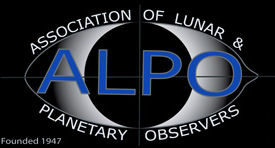 Association
of Lunar and Planetary Observers
Association
of Lunar and Planetary Observers 2011 Conference
July 20-23, 2011
Las Cruces, New Mexico
 Association
of Lunar and Planetary Observers
Association
of Lunar and Planetary Observers | Conference Overview |
NMSU Campus |
Conference Information |
Lodging | Excursions | Registration Form |
We have scheduled two excursions for the two days before the conference.
Both trips will depart from the Sleep Inn. Those staying in the dorms will need
to arrive at the Sleep Inn at least fifteen minutes before the excursion is
scheduled to depart. We will be traveling in fifteen passenger vans from Las Cruces Shuttle and TaxiService.
While these are comfortable vans, there are no restroom facilities in the
vehicles. We will attempt to make sure that there are sufficient rest stops,
but rest areas are far apart in New Mexico, so please minimize drinking liquids
just before departure.
We will schedule additional vans as reservations are received. We reserve the
right to refund payments if we are unable to adequately fill the vans. If there
are insufficient reservations, we may cancel the entire excursion. Note that
you can still drive to these locations and take the self-tours. For those not
interested in the tours, there is souvenir, jewelry, and Native American
pottery shopping available on the historic Old Mesilla Plaza. You can also
visit the White Sands National Monument. There are also points of interest in
El Paso.
Reservations for these excursions must be received by July 1, 2011.
Reservations received after that date may not be accepted.
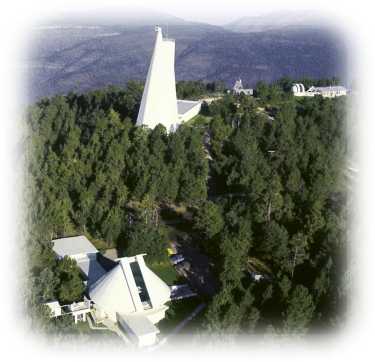 Our first excursion will take
us to the National Solar Observatory at Sunspot, New Mexico in the Lincoln
National Forest. Located on Sacramento Peak, the observatory sits at the edge
of the Tularosa Basin, overlooking the Basin and White Sands National Monument.
The principle instrument is the Richard B. Dunn Solar Telescope (DST), a
vertical-axis solar telescope. Also located at the NSO are the Evans Solar
Facility and the Hilltop Dome Facility. NSO has an interesting Visitors Center
where we will start our tour.
Our first excursion will take
us to the National Solar Observatory at Sunspot, New Mexico in the Lincoln
National Forest. Located on Sacramento Peak, the observatory sits at the edge
of the Tularosa Basin, overlooking the Basin and White Sands National Monument.
The principle instrument is the Richard B. Dunn Solar Telescope (DST), a
vertical-axis solar telescope. Also located at the NSO are the Evans Solar
Facility and the Hilltop Dome Facility. NSO has an interesting Visitors Center
where we will start our tour.
Sacramento Peak is at an elevation of 9,255 feet (2,821 meters) above sea
level. Some type of head protection, sun screen, and a jacket may be needed at
the site. We will be taking a 90 minute walking tour around the observatory, so
comfortable shoes are suggested. The Observatory grounds have an altitude
difference of about 150 ft (50 m) between its lowest and highest points (though
the basic telescope tour spans only about 50 ft/15 m altitude difference), so
visitors from lower altitudes may experience shortness of breath and are
advised to walk slowly. Special arrangements can be made for visitors who
experience problems in walking to the telescopes. This is monsoon season, so it
is possible we will encounter rain storms, especially in the afternoon. Please
click here for frequently asked questions about the
Observatory.
Our first stop on this trip will be White Sands
Missile Range Museum. This will allow us to walk through the outside Missile
Park while it is still relatively cool. We will see a variety of missiles and
rockets tested at White Sands. These include everything from the WAC Corporal
and Loon (U.S. version of the V-1) to a Pershing II and Patriot. More than
fifty items are on display. In the Museum, you can trace the origin of
America's missile and space activity, find out how the atomic age began and
learn about the accomplishments of scientists like Dr. Wernher von Braun and
Dr. Clyde Tombaugh at White Sands. Displays also include the prehistoric
cultures and the rip-roaring Old West found in southern New Mexico.
Since we will actually enter White Sands Missile Range Main Base to reach the
Museum, you will need a government issued picture identification card to enter
the Base. Even though the sun will not be very high, sun screen and a head
covering is recommended.
| 0800 | Depart Sleep Inn | |
| 0900 | Arrive White Sands Missile Range Museum | You must have a government issued picture ID |
| 1030 | Depart WSMR Museum | |
| 1200 | Arrive National Solar Observatory | Lunch at Visitor's Center |
| 1300 | Tour National Solar Observatory | |
| 1500 | Depart National Solar Observatory | |
| 1700 | Arrive at Sleep Inn |
Lunch will be provided, and includes two snacks, and two bottles of waters. Lunch choices include choice of:
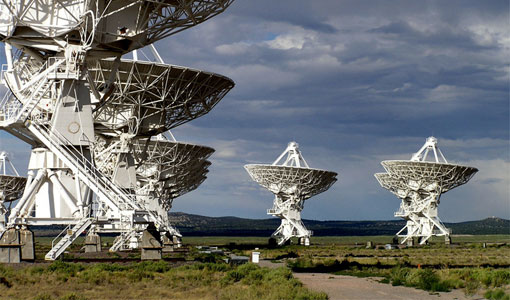 Our
second excursion will take us to the Plains of San Agustin, fifty miles west of
Socorro, New Mexico. There, in natural bowl, we will visit the National Radio
Astronomy Observatory's Very Large Array. This array can be used as a single
radio telescope composed of twenty-seven 82-foot (25 m) parabolic antennas. It
can also be used in smaller groupings as needed for the scheduled research
programs. The antennas can be spread out "Y"-shaped pattern that can be up to
22 miles (36 km) across. We will be able to see the telescope control room, one
of the individual antennas, and the antenna maintenance building. This
observatory was featured in the movie Contact.
Our
second excursion will take us to the Plains of San Agustin, fifty miles west of
Socorro, New Mexico. There, in natural bowl, we will visit the National Radio
Astronomy Observatory's Very Large Array. This array can be used as a single
radio telescope composed of twenty-seven 82-foot (25 m) parabolic antennas. It
can also be used in smaller groupings as needed for the scheduled research
programs. The antennas can be spread out "Y"-shaped pattern that can be up to
22 miles (36 km) across. We will be able to see the telescope control room, one
of the individual antennas, and the antenna maintenance building. This
observatory was featured in the movie Contact.
The Visitor Center has restrooms, water fountains, a soft-drink machine, and
soft drinks, bottled water, and candy bars in the gift shop. No other food is
available at the VLA site. The VLA is at an elevation of 7,000 feet. At this
elevation, the weather can be considerably colder than that at lower
elevations. While we do not expect it to be cold enough in July, a light jacket
may be advisable. When we pass through the mountains approaching the VLA,
please turn off your cell phones, as they interfere with the VLA's operation,
however, digital and film cameras may be used.
On the way to the VLA, we will visit the Pete V. Domenici Science Operations
Center in Socorro, New Mexico. Originally dedicated in 1988, the Center houses
offices and laboratories that support Very Large Array (VLA) and Very Long
Baseline Array (VLBA) operations. The center also supports work on the VLA
modernization project and on the international Atacama Large
Millimeter/submillimeter Array (ALMA) project. Work on ALMA at the Socorro
center and at the ALMA Test Facility at the VLA site west of Socorro has
focused on developing and testing equipment to be deployed at the ALMA site in
Chile's Atacama Desert. We will visit a workshop at the Science Operations
Center where receivers and testing equipment are built. We will have lunch
there before departing for the VLA.
| 0730 | Depart Sleep Inn | |
| 1100 | Arrive at Pete V. Domenici Science Operations Center | Lunch before departing to VLA. |
| 1300 | Depart Science Operations Center | |
| 1400 | Arrive Very Large Array - Technical Tour of VLA | |
| 1630 | Depart Very Large Array | |
| 2000 | Arrive at Sleep Inn |
Lunch will be provided, and includes two snacks, and two bottles of waters. Lunch choices include choice of:
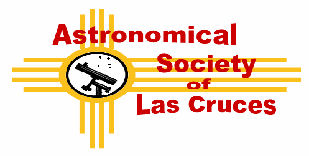
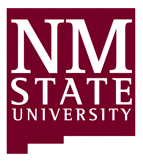 The
2011 Association of Lunar and Planetary
Observers conference is sponsored by the Astronomical Society of Las Cruces and The Astronomy
Department of New Mexico State University.
The
2011 Association of Lunar and Planetary
Observers conference is sponsored by the Astronomical Society of Las Cruces and The Astronomy
Department of New Mexico State University.Last Updated July 21, 2011
Copyright by the respective copyright holders or by Berton Stevens, 2011